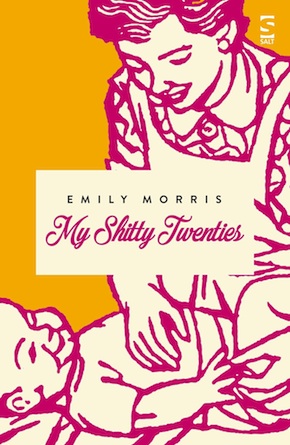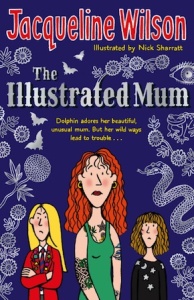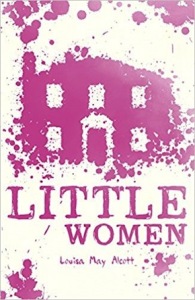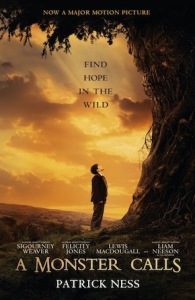Going it alone
by Emily Morris
“Daring, eloquent, and important… I cried heaps and adored every page.” Emma Jane Unsworth
What springs to mind when you hear the term ‘single mother’? Despite the passage of time, the opening of minds and general social progression, the term still comes loaded with negative connotations. Around a quarter of UK families are headed by a lone parent, and 90% of them are women. If some headlines are to be believed, single mothers are scroungers, criminals and a scourge on society. We’ve come a long way since Victorian female oppression and the post-war familial idyll, yet women raising children alone are still frowned upon at best, vilified at worst. It’s a shame, really: the term ‘absent father’ barely makes it into our collective vernacular, and single mothers are usually the ones left behind, struggling to make the best they can of a difficult situation. Art is one of the most powerful tools we have to shift perceptions and encourage empathy. Portrayals of single parents in literature are relatively scant, but over the years there have been a few, and many of them resonated with me as I tried to find my own way as a single mum. Here are ten of my favourites.
1. Helen Graham: The Tenant of Wildfell Hall, Anne Brontë
Before her untimely death. the lesser-lauded Brontë sister gifted us a brave tale of a trailblazing single mum. Neighbours are suspicious when ‘widow’ Helen Graham moves into a nearby mansion with her young son, and rumours and sniping gossip quickly begin. Gilbert Markham, one of the neighbours, is fascinated by Helen and manages to get a snoop inside her diaries. There, we discover that Helen has left behind her cavorting, alcoholic, abusive husband, taking their baby and her mother’s maiden name. Eavesdropping on Helen’s inner thoughts is a treat; we get to know a woman who is astute, resilient and wry. Helen doesn’t have to worry about housing (her uncle happened to own the empty mansion and let her move in) or childcare (Helen’s housekeeper comes with her to Wildfell and looks after baby Arthur while she paints for a living), but she was well ahead of her time, breaking the law and crushing social norms. As Brontë biographer May Sinclair famously wrote, “The slamming of Helen Huntingdon’s bedroom door against her husband reverberated throughout Victorian England.”
The loss of Beloved and its effects on the family are heartbreaking, but Sethe keeps going with a wondrous determination.”
2. Sethe: Beloved, Toni Morrison
The ghost of baby Beloved haunts the pages of this devastating and profound novel as palpably as she does 124 Bluestone Road, the book’s central address. At the core of the story is a catastrophic moment, in which Sethe decides that killing her children is preferable to them enduring a life of slavery. Sethe has already suffered unthinkable abuse and indignity at the hands of male captors, but they have tracked her down and want to drag her and her family back into slavery at the farm they fled. Her husband, who witnessed her abuse in stunned silence, has gone mad, and she is on her own. Sethe cannot bear to let her children suffer such inhumanity and, petrified, decides to kill them all. Horrifically, only the baby, Beloved, is killed before Sethe is stopped in her tracks. Despite the trauma she has experienced and the painful psychological and physical wounds, Sethe escapes imprisonment and catches up with her mother and three surviving children. The loss of Beloved and its effects on the family are heartbreaking, but Sethe keeps going with a wondrous determination.
 3. Marigold: The Illustrated Mum, Jacqueline Wilson
3. Marigold: The Illustrated Mum, Jacqueline Wilson
Nobody handles delicate family issues quite as deftly as Wilson, especially at the awkward pre-teen age. This beautifully written, accessible book tells the story of two incredibly resilient sisters and their troubled mother. Dolphin, the younger of the two sisters, is in absolute awe of her unpredictable, tattooed mother. Meanwhile, older sister Star (our narrator) is sick of Marigold’s wild ways and grows more cynical by the page. As the story unfolds, it becomes clear that Marigold is suffering from bipolar disorder. She’s judged by everyone from schoolteachers to the lady living in the flat downstairs. When she’s well enough, Marigold makes a sterling effort to spend time with her daughters and do fun stuff with them, but when the illness consumes her, they’re on their own. It’s important to understand that whilst Marigold does let her daughters down, she loves them and wants them to be happy. This is a real, believable novel that handles mental illness in a subtle and educational way.
4. Miss Honey: Matilda, Roald Dahl
As soon as Jennifer Honey begins to teach Matilda, she recognises her extraordinary academic ability. Matilda has read an impressive stack of classic books and the library is her solace away from a home of chaos and neglect. Matilda doesn’t always put her intelligence to good use, though: she discovers that her powerful mind is capable of telekinesis and begins to use it to play practical jokes at school and exact revenge on her unloving family, earning herself a reputation for being naughty. Eventually, Miss Honey confides in Matilda that Miss Trunchbull, the battleaxe head teacher of the school, has massively wronged her, and Matilda decides to intervene. Miss Honey asks Mr and Mrs Wormwood, Matilda’s parents, if Matilda can move in with her, and they happily agree. OK, real-life adoption isn’t as easy as asking parents if their child can come and live with you, but then again, most kids can’t do telekinesis. Children need adults who recognise the reasons why they might be behaving in a certain way (even if telekinesis isn’t involved), and in an age when more single parents are bravely fostering or adopting children in care, Miss Honey is an inspiration.
5. Anne Lamott: Operating Instructions, Anne Lamott
People often assert that babies don’t come with an instruction manual, and wish that they did. It is this notion that inspired the title of this honest memoir, which charts Lamott’s first year as a single mother. It’s not a user guide, but it kind of is. We open with Lamott racing across San Francisco’s Golden Gate Bridge, about to give birth. She’s having a baby and she’s going it alone. Lamott is a recovering alcoholic and her prose is shot through with sharp wit and life experience. As she gets to grip with being a mum and deals with bereavement in the mix, we see how Anne is supported by her beloved friends, church community and her faith. The faith stuff jarred at first, because I’m not religious myself, but I understood why it’s so important to Lamott as I got to know (and love) her. Lamott specialises in instructions; Bird-to-Bird, her guide to writing, is up there with my notebook on must-have-to-hand books. It is one of the best guides to writing that I have ever read. Lamott’s kind and wise and funny, and she’s an absolute inspiration, as a mother, as a writer, and as a woman.
6. Mum: A Monster Calls, Patrick Ness
This beautiful novel, written for older children, deals excellently with death, specifically death by cancer. At a time in which cancer is increasingly prevalent, it’s a vital piece of writing. It’s important to know the back story: Siobhan Dowd, an accomplished and talented Young Adult author, came up with the premise when she herself was fighting cancer. Tragically, she died before the book could make it to fruition. Patrick Ness was asked to take up the reins and he did so, brilliantly. This is the story of Conor, a boy who must try to come to terms with his mother’s terminal illness. His father lives in California and his grandma struggles to understand him. The bond he has with his mother is solid and exquisite. When she’s lying on her deathbed, she nobly gives him permission to get furious, even break things if he must, telling him she wishes she could give him hundred years. I defy you not to splash the final few pages of this book with tears, but still urge you strongly to read it, whatever your age.
This memoir is a beautiful eulogy to Angelou’s mother, and shows how love can prevail even in the most trying circumstances.”
7. Vivian Baxter: Mom & Me & Mom, Maya Angelou
Readers of Angelou’s stunning books will have already been familiar with her mother, Vivian Baxter, before they got to this, her seventh and final memoir. We revisit many of the moments already covered in Angelou’s other stories, but this book focuses on the relationship between Baxter and her daughter, and it feels like atonement. When Angelou was three, her parents were divorced and she was put on a long train journey, with only her five-year-old brother for company, to live with her grandmother. When she was eight years old, Angelou was raped, an experience that she painfully recounted in I Know Why the Caged Bird Sings. The perpetrator was murdered and Angelou bore heavy guilt for his death, becoming mute. For many years, Angelou resented her mother for her abandonment and referred to her only as Lady. In Mom & Me & Mom, we learn how Angelou herself became a single mother at 17. Terrified of Baxter’s reaction to her pregnancy, she doesn’t tell her until three weeks before the baby is due. Baxter’s reaction is to run Angelou a bath, and to help her through labour. This memoir is a beautiful eulogy to Angelou’s mother, and shows how love can prevail even in the most trying circumstances.
8. Ma: Room, Emma Donoghue
This breathtaking novel is told through the eyes of five-year-old Jack, whose entire world comprises a locked outbuilding known as Room. The only two human beings Jack knows are his mother, Ma, and Old Nick, who visits them at night. Old Nick captured Ma when she was a teenager and locked her in the room, and Jack was conceived during one of the many rapes that Old Nick subjects her to. Despite the horrific circumstances, Ma is determined to give Jack a good upbringing; she feeds him healthy food, teaches him to exercise and ensures he stays clean. Ma even discourages Jack from watching TV, and lets him believe that life beyond Room is fictitious, and only exists inside the television set. The novel is inspired by the Josef Fritzl case, and the emergence into reality of Felix Fritzl, one of the seven children Elisabeth Fritzl had during her time kept captive by her father. Although we see things from Jack’s point of view, he shows us the steeliness of his mother, and the daily focus and strength that he inadvertently gives to her.
 9. Marmee: Little Women, Louisa May Alcott
9. Marmee: Little Women, Louisa May Alcott
Whilst she isn’t officially single, Marmee, as Mrs March’s daughters prefer to call her, is doing sterling work raising her children alone. Her husband, Mr March, is away fighting in the American Civil War, and after losing the family’s money has left his wife and daughters struggling with poverty. Marmee is in equal measure calm and tough, and guides her daughters through challenges, romantic struggles, even terrible illness and death. She recognises the positives in each of the girls’ strong personalities and encourages them to nurture them as they grow into women. Marmee instils a strong work ethic in her girls, and, at a time when inequality was rife, teaches them to treat all people with the same level of love and respect. Although second sister Jo is considered to be the protagonist of the novel, Marmee, it could be argued, is the star of the show.
10. Rosamund Stacey: The Millstone, Margaret Drabble
Most books about single parents focus on those who have found themselves on their own through divorce or separation, but few follow women who are on their own in pregnancy. Just before the sixties started to swing, two novels were published that told such stories. The L-Shaped Room by Lynne Reid Banks and The Millstone by Margaret Drabble have young, creative women as their protagonists, both of whom have become pregnant alone in London in far from ideal circumstances. For my No. 10, it was a tough call to choose between Jane Graham of The L-Shaped Room and Rosamund of The Millstone. Graham is incredibly independent and courageous, but in the end I went with Stacey because her I love how her humour gets her through difficult times. After feigning sexual promiscuity to look good in front of her friends, Stacey eventually loses her virginity after falling awkwardly into bed with George (who is probably gay), and promptly becomes pregnant. After considering adoption and abortion, Stacey decides to continue with her pregnancy. New motherhood isn’t easy, and Stacey has to cope with her baby, Octavia, becoming seriously ill, but in her daughter she discovers a beloved companion and sense of purpose. Just like Helen Graham in Wildfell, both Rosamund Stacey and Jane Graham have roofs put over their head by wealthy family members, but they were still fearless in their decisions to go it alone.
 Emily Morris was a 22-year-old student when she found out she was pregnant. The father of her baby told her to “enjoy your impending shitty, snotty, vomitty twenties” and then disappeared. She left university, moved back to the quiet town she was from to live with her mum, and braced herself for life being turned upside down. She now lives in Manchester with her son and cat, and teaches writing workshops to adults and teenagers. In her memoir My Shitty Twenties, out now from Salt Publishing, she shares the loneliness, alienation and adventure she experienced finding her way as a single parent.
Emily Morris was a 22-year-old student when she found out she was pregnant. The father of her baby told her to “enjoy your impending shitty, snotty, vomitty twenties” and then disappeared. She left university, moved back to the quiet town she was from to live with her mum, and braced herself for life being turned upside down. She now lives in Manchester with her son and cat, and teaches writing workshops to adults and teenagers. In her memoir My Shitty Twenties, out now from Salt Publishing, she shares the loneliness, alienation and adventure she experienced finding her way as a single parent.
Read more
emilymorris.wordpress.com
@MyShitty20s
Author portrait © Rebecca Lupton


